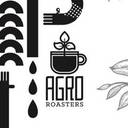Th3rdwave Directories
Cafés
Roasters
Coffees
Guides
Awards
Th3rdwave Coffee Club
Subscription
Gift subscription
Current edition
Past editions
Shop
Advent Calendar
Coffee games
Th3rdwave Wallet
Loyalty cards
Gift cards
Th3rdwave for cafés
Th3rdwave for roasters
Get free coffee
Timuza
The Eastern Highlands of Papua New Guinea is a mountainous region located in the eastern part of the country. Characterized by rugged terrains, dense forests, and high-altitude plateaus, the Eastern Highlands are part of the larger Highlands region. The area is inhabited by diverse ethnic groups, each with its own unique traditions and languages.
This coffee is sourced from the Timuza Coffee Cooperative in Kainantu, Eastern Highlands. The group consists of 207 coffee families, who together farm 274 hectares. The soil is loamy and rich with volcanic ash, the weather is hot and wet year round, and the coffee is shaded by Casuarina (a weepy evergreen), Albizia (also known as silk trees), Schzomeria (used for the interior of the Sydney Opera House) and Stemona (a family of vines).
The coffee is hand picked, hand pulped, washed in clean river water, dried in the sun and delivered as parchment to the receiving station, where it’s machine hulled and polished. The receiving station also has its own tiny warehouse. Because producers will travel quite a distance to deliver to the co-op, which appreciates and pays a premium for quality, it's building a little sleeping loft in a corner of the warehouse, so that producers who arrive late can stay the night before returning home.
The resulting cup reminds us of molasses, green apple and cinnamon.
This coffee is sourced from the Timuza Coffee Cooperative in Kainantu, Eastern Highlands. The group consists of 207 coffee families, who together farm 274 hectares. The soil is loamy and rich with volcanic ash, the weather is hot and wet year round, and the coffee is shaded by Casuarina (a weepy evergreen), Albizia (also known as silk trees), Schzomeria (used for the interior of the Sydney Opera House) and Stemona (a family of vines).
The coffee is hand picked, hand pulped, washed in clean river water, dried in the sun and delivered as parchment to the receiving station, where it’s machine hulled and polished. The receiving station also has its own tiny warehouse. Because producers will travel quite a distance to deliver to the co-op, which appreciates and pays a premium for quality, it's building a little sleeping loft in a corner of the warehouse, so that producers who arrive late can stay the night before returning home.
The resulting cup reminds us of molasses, green apple and cinnamon.
The Eastern Highlands of Papua New Guinea is a mountainous region located in the eastern part of the country. Characterized by rugged terrains, dense forests, and high-altitude plateaus, the Eastern Highlands are part of the larger Highlands region. The area is inhabited by diverse ethnic groups, each with its own unique traditions and languages.
This coffee is sourced from the Timuza Coffee Cooperative in Kainantu, Eastern Highlands. The group consists of 207 coffee families, who together farm 274 hectares. The soil is loamy and rich with volcanic ash, the weather is hot and wet year round, and the coffee is shaded by Casuarina (a weepy evergreen), Albizia (also known as silk trees), Schzomeria (used for the interior of the Sydney Opera House) and Stemona (a family of vines).
The coffee is hand picked, hand pulped, washed in clean river water, dried in the sun and delivered as parchment to the receiving station, where it’s machine hulled and polished. The receiving station also has its own tiny warehouse. Because producers will travel quite a distance to deliver to the co-op, which appreciates and pays a premium for quality, it's building a little sleeping loft in a corner of the warehouse, so that producers who arrive late can stay the night before returning home.
The resulting cup reminds us of molasses, green apple and cinnamon.
This coffee is sourced from the Timuza Coffee Cooperative in Kainantu, Eastern Highlands. The group consists of 207 coffee families, who together farm 274 hectares. The soil is loamy and rich with volcanic ash, the weather is hot and wet year round, and the coffee is shaded by Casuarina (a weepy evergreen), Albizia (also known as silk trees), Schzomeria (used for the interior of the Sydney Opera House) and Stemona (a family of vines).
The coffee is hand picked, hand pulped, washed in clean river water, dried in the sun and delivered as parchment to the receiving station, where it’s machine hulled and polished. The receiving station also has its own tiny warehouse. Because producers will travel quite a distance to deliver to the co-op, which appreciates and pays a premium for quality, it's building a little sleeping loft in a corner of the warehouse, so that producers who arrive late can stay the night before returning home.
The resulting cup reminds us of molasses, green apple and cinnamon.
Coffee origin
Country
Papua New Guinea
Region
Eastern Highlands
Variety
arusha, mundo novo, typica
Altitude
1420 - 1600 m
Farm
207 farmers
Producer
Timuza Coffee Cooperative
Roast level
Light medium
Process
washed
Tastes like
🍯
molasses
🍏
green apple
🥮
cinnamon
Community reviews
🙂
3.3 Very Good
2 Reviews
What people are saying
Recipes

AeroPress by Tim Wendelboe
AeroPress

Hario V60 by Ritual Coffee Roasters
Pour over

Espresso For Light Roasts
Espresso
Check out more in the App







